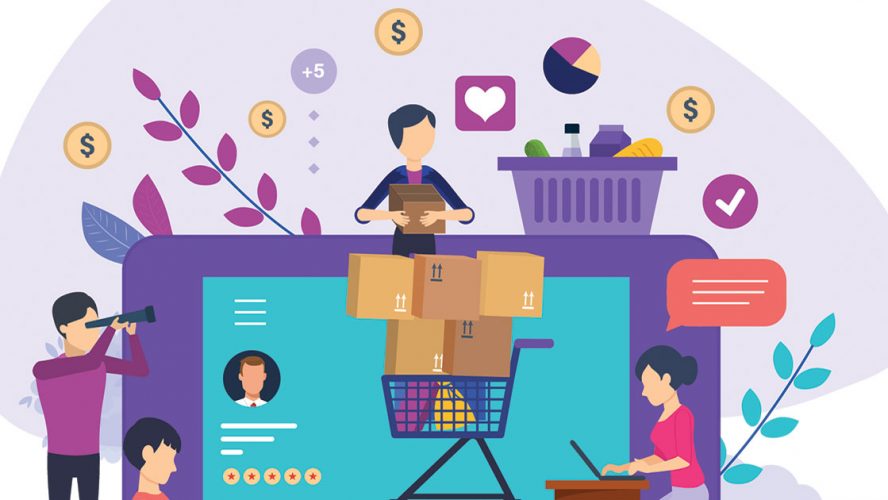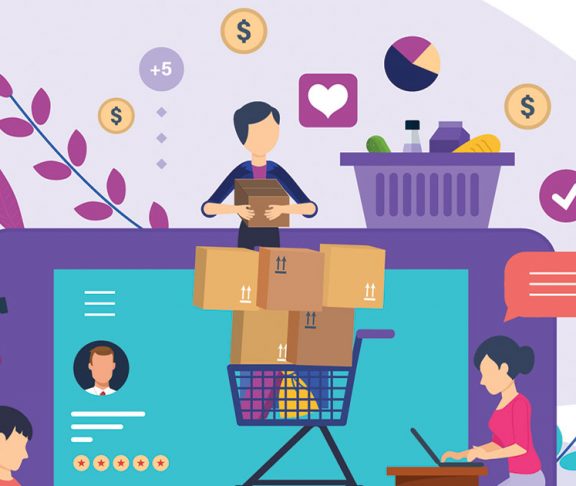Amid this rapid change, retailers are rising to the challenge and creating unique, customized, and delightful experiences that seamlessly reach across channels.
Because the future of loyalty isn’t in stores oronline. It’s both. It’s in the middle. It’s everywhere you are.
Retailers are focused on connecting with customers, no matter how they shop. That’s why companies that have been around for decades are building digital offerings with major investments in ecommerce, AI, data and the supply chain. It’s why retailers that started online are opening physical stores. It’s why, right now, you can take out your phone, order online, pick up in store and enjoy a personalized, continuous experience at every step.
A customized approach
The journey to purchasing — and ultimately loyalty — now involves different channels working together. Many people start their shopping journey digitally, but still end it with a purchase in a physical store, which remains the best way for consumers to experience a brand. And the in-store experience is also changing with the emergence of new technologies and services.
These innovations are winning consumers over. According to NRF’s Consumer View survey, the majority of consumers have tried services like buy online, pick up in store, mobile payment, and self-checkout. They’re also interested in advanced, tech-enabled tools like in-app store navigation, visual search, virtual and augmented reality, virtual fit, and smart dressing rooms.
These technologies and interactions enable greater personalization, which is especially valuable to younger consumers. Two-thirds of millennials say they like it when websites track their visits and recommend products. Two-thirds also say they would be more loyal to a brand that lets them give input and help shape the products and services they buy.
Leading retailers are pursuing these new opportunities to build loyalty, using online and in-store to complement each other and personalize experiences to each customer.
Setting the standard
Target is a great example. It’s making massive investments in stores, transforming how they look, how they’re staffed, and how people use them. Stores are now the home of advanced tech and sophisticated services, blending physical and digital to offer customers more. Employees are also receiving more training and higher pay — a talent-first approach to customer service. These strategic investments have transformed the Target trip, redefining the customer experience and winning new fans.
Or consider Sephora. The company is embracing an “omnitude” mindset, creating a holistic, personalized shopping experience that reaches across all channels and departments. For instance, info from in-store makeover sessions is captured in a digital guide, enabling one-click purchases in the future. The company is also capitalizing on the opportunity for ecommerce returns to drive more in-store interactions.
Nordstrom is another retailer transforming its services and stores to cater to customers. The company is taking a hyper-local approach, with spaces that provide unique services and experiences tailored to the neighborhood and its customers. These local hubs have zero inventory; instead, customers come in to pick up online orders, get suits tailored, enjoy a manicure, and other services. The approach redefines the role of the store to create a connection, increasing loyalty and spending.
That is how you build loyalty in the digital age. Customers want — and increasingly expect — customized shopping experiences that blend online and in-person, using advanced technologies without losing the personal touch. America’s retailers are finding new ways to deliver just that.



